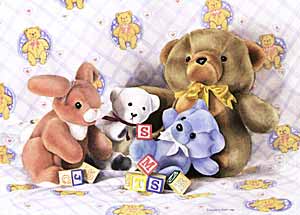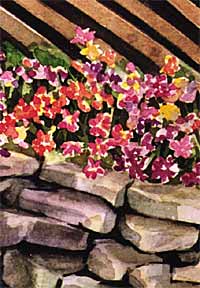 |
|
A) Masking fluid was used to retain the white of the paper while the dark green foliage was painted, this allowed the flower colors to remain vibrant.
B) shows layering of transparent color to create the shape and shadows of the rocks |
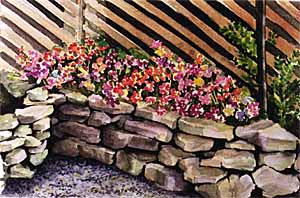

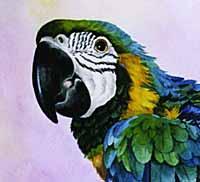 |
|
A variety of greens and blues, of varying color intensities, were used and applied with the wet-into-wet method to keep the color transitions smooth.
The beak was not painted with black from the tube, but with a mixture of ultramarine and burnt umber. The dark area at the throat is not black but a very deep green. |

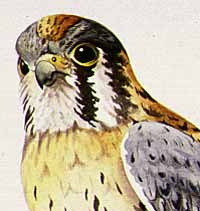 |
|
Details go on last. Look past the dark markings on the Kestrel and you will see that the first step was simply laying down areas of wet-into-wet gradations of color.
|
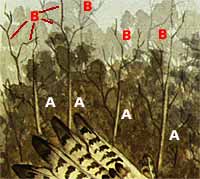 |
|
A)The light colored trunks of the trees show where a brush was used to remove color.
B)The trees and sticks were painted with a round brush using the wet-on-dry method. |

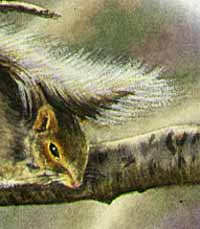 |
|
The light colored areas in the background show where a brush was used to remove color.
Sometimes only white gouache and a drybrush technique will give a good white fur. |
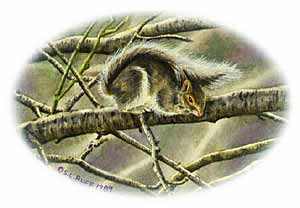
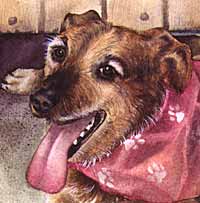 |
|
The light colored areas in the background show where a brush was used to remove color.
White gouache was used for Toto's whiskers and pawprints on his scarf. His teeth and other light colored areas are planned by preserving the white of the paper. Most of the hairs were painted with the drybrush technique. |
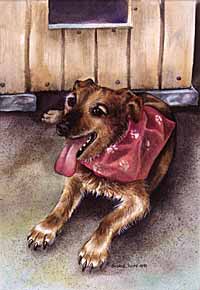
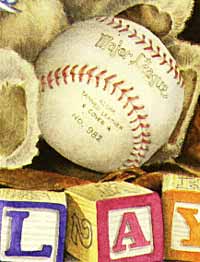 |
|
The Baseball Bear's light colored areas were planned by preserving the white of the paper. Details went on last like the baseball lettering and glove stitching.
|
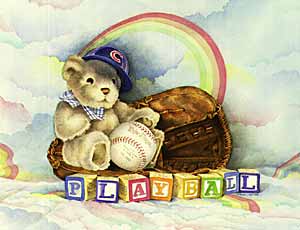
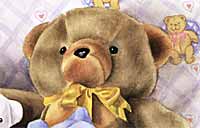 |
|
Teddy Bears are all wet-into-wet painting. To get deep colors and shadows, allow the paint to dry and then add another wet-into-wet layer on top.
|
